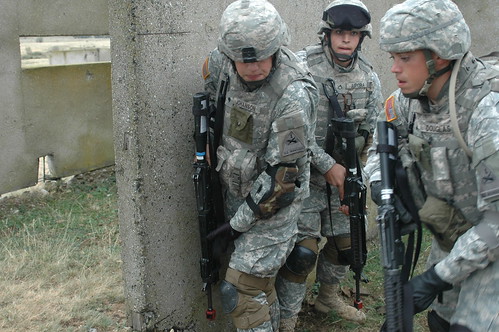
This probably falls into the category of stuff everyone already knows, but it’s so important I wanted to mention it anyway.
Training is one of the most common interventions in international aid. It’s where we all start, when we think about problem solving. If the doctors/farmers/parliamentarians/journalists knew how to do their work better, everything would be just fine, right? But as we learn very quickly, training is one of the hardest things to get right. Here’s what I know.
Pre and post training knowledge tests are worthless. It doesn’t matter if people know more after your training. It matters if your trainees actually change the way they act after your training. The best solution I have found is competency-based training.
Competency-based training (CBT) means that you only teach people what they need to be able to do. Nothing extra. You don’t graduate them from the training until they can do it properly, in the context they need to do it in the future.
For a physician, then, if you are training on IUD insertion, you teach as much anatomy information as they need to do an IUD insertion. You then train them to do the insertion on life-like medical models and then you train them to do it on actual female volunteers. Finally, you observe them while they do insertions in patients in a clinical setting.
Notice what they are not doing: reading about IUD insertion or taking tests on their knowledge of female anatomy. Instead, they watch insertions being done, and they do them. Your physician officially completes the training and gets her certificate when she can insert an IUD correctly on her own in a clinical context.
CBT generally includes checklists that define the proper performance of whatever thing they’re teaching, for trainers to use as they observe trainees. If you want to use the best possible practice for your training, you don’t officially certify your trainees until they’ve been back at work for a while and you observe them using their new skills properly in their work practice.
Next, you need to make sure trainees are allowed to use their new skills. That means, at the very least, making sure that their supervisors understand and support the new approach and making sure that the new approach is legal. If you train teachers to use a new technique where students choose which topics to study, it won’t work if the principal won’t let them or the national curriculum requires certain topics during certain months. Training entire cohorts – everyone in one office, say – also helps support people to use their new skills.
Finally, if you want trainees to share their new skills, you have to put something official in place. It does not happen on its own. It doesn’t happen because people like being the most competent person among their peers and don’t necessarily want to share, and it doesn’t happen because just learning something new doesn’t make you a natural or comfortable trainer. You could, for example, require that all new trainees give a presentation to colleagues once they complete training (and you could plan for that by adding a session to the training itself for participants to develop and plan their presentation for colleagues). This probably won’t get those colleagues to change their behavior, but it will at least help everyone understand why one staff member is doing things differently.
Possibly the biggest challenge to getting impact from training is keeping your employees once they’re trained. Newly trained staff may leave through natural attrition, or because they are poached because of their updated skills. You can try positive incentives – pay raises, benefits like internet access or plots of land for kitchen gardens, but you can only provide so much in a resource-restricted context. Or you can try punitive methods – make people sign a contract to stay for a certain amount of time after training and pay a penalty of they don’t – but that can make people nervous about being trained.
I think the best solutions are long-term. You can train so many people that it makes up for natural attrition and floods the market to reduce demand. Or – this is my favorite solution – you can incorporate training into professional education. If every nurse learns patient counseling skills in nursing school, then you don’t need to come along and train them at all on the topic later.
_______
Chosen because it’s competency based training in action. They’re not sitting there reading about house-to-house search.



